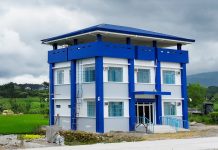TACLOBAN CITY— With the region’s abaca industry being stalked with a viral disease, the regional office of the Philippine Fiber Industry Development Authority (PhilFIDA) is conducting a training to address the problem.
The training aims to bring down the disease incidence below 5% since it is at this level that abaca farmers can still manage the worsening situation caused by the massive virus infection, said Engr. Wilardo Sinahon, PhilFIDA-8 head. According to Sinahon, the main strategy of the abaca disease management training is to teach farmers on how to kill the vectors and to stop the virus from spreading. A technology was created by the PhilFIDA that could kill the vectors that causes bunchy top, the disease that has been stalking the region’s abaca industry since 2005. Insecticides and herbicides were used to kill the insects and the infected abaca plants. Chemicals and other supplies such as protective gears, rain coats, boots, goggles, and mask were also provided.
Aside from the technical supervision from the PhilFIDA, technicians and contractual workers were hired to guide farmers in spraying and injecting the infected abaca plants.
The participating farmers likewise received P1,500 per hectare incentive, as part of assistance. The virus that affected abaca production in the region, notably in Southern Leyte and Leyte provinces, is considered as a major disease because the infected abaca plants become unproductive. Thus, reducing the income of the abaca farmers. After the program was implemented in Southern Leyte, there were already visible abaca plants in the said province. In Barangay Pinamunuan, Mahaplag, Leyte, five stripping machines were operationalized and their production of fiber went back on track after PhilFIDA implemented the program in the barangay.
“These reports are proof that the abaca disease management program has a good effect,” Sinahon said. Northern Samar, the region’s top abaca producer, has reported of virus-infected areas like in Las Navas. (JESLY MARIVIE GASPAY, LNU Intern)



